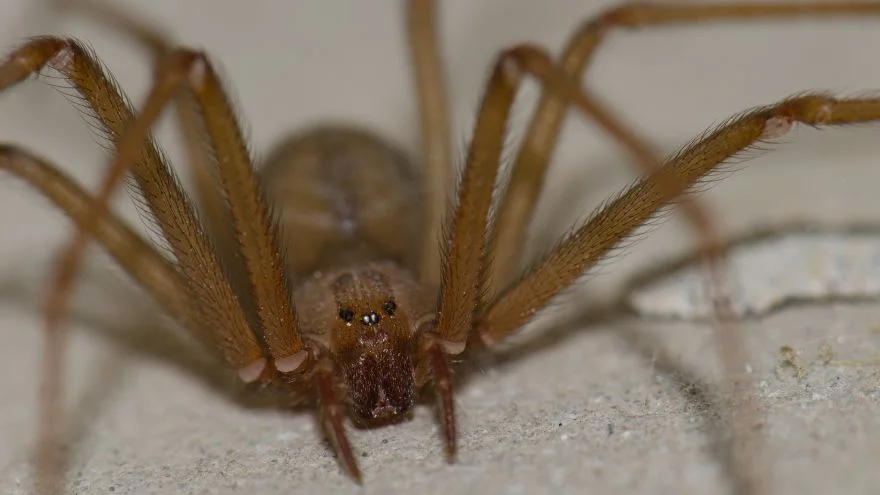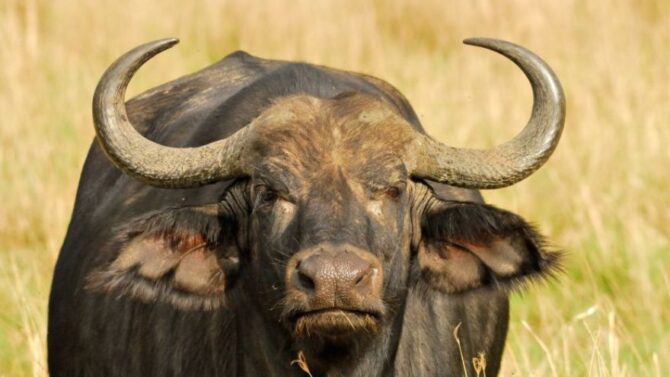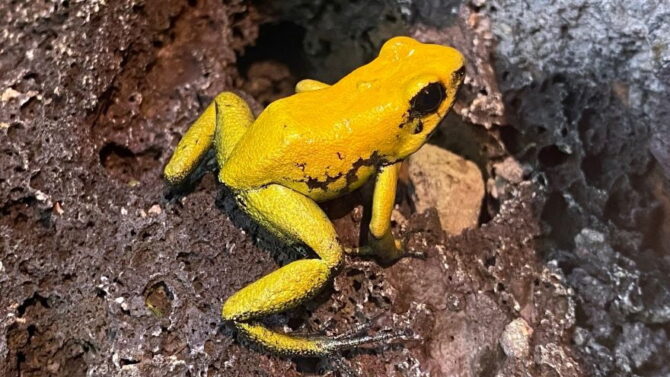Patagonia is home to fantastic wildlife, but some of these animals are deadly, and you should avoid them. Some of the most dangerous animals in Patagonia include the Chilean recluse spider, cougar, kodkod, etc.
Patagonia is a geographical region that encompasses the southern end of South America and is governed by Argentina and Chile.
It is known for its striking landscapes and breathtaking water bodies, ranging from the Andes mountains to the Straits of Magellan, and supports the survival of many kinds of animals.
Its enabling ecosystem provides a suitable environment for these creatures to thrive.
This article will provide insights into 12 of the most dangerous animals that live in Patagonia, as well as safety tips for exploring wildlife in the area.
What are the Most Dangerous Animals in Patagonia?
1. Chilean Recluse Spider
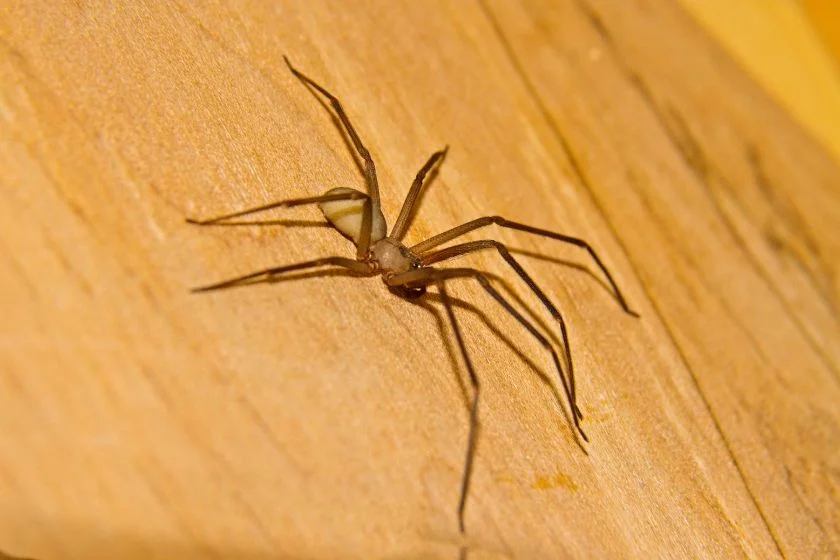
- Scientific name: Loxsceles laeta
- Classification: Arachnid
- Habitat: Debris, forests, rocks
- Diet: Carnivore
- Conservation status: Least concern
A member of the Recluse family and a venomous spider, this spider is native to South America.
It has even been introduced to areas outside of its natural range but doesn’t thrive well in those places.
Among the recluse spider family, the Chilean recluse spider is considered the most dangerous due to its potent venom. It can bite a human.
In 2018, a 16-year-old girl was bitten by a Chilean recluse spider and was hospitalized.
The love of these spiders for warm temperatures makes them rampant during summertime. Be careful of the Chilean black recluse during summer.
2. Cougar
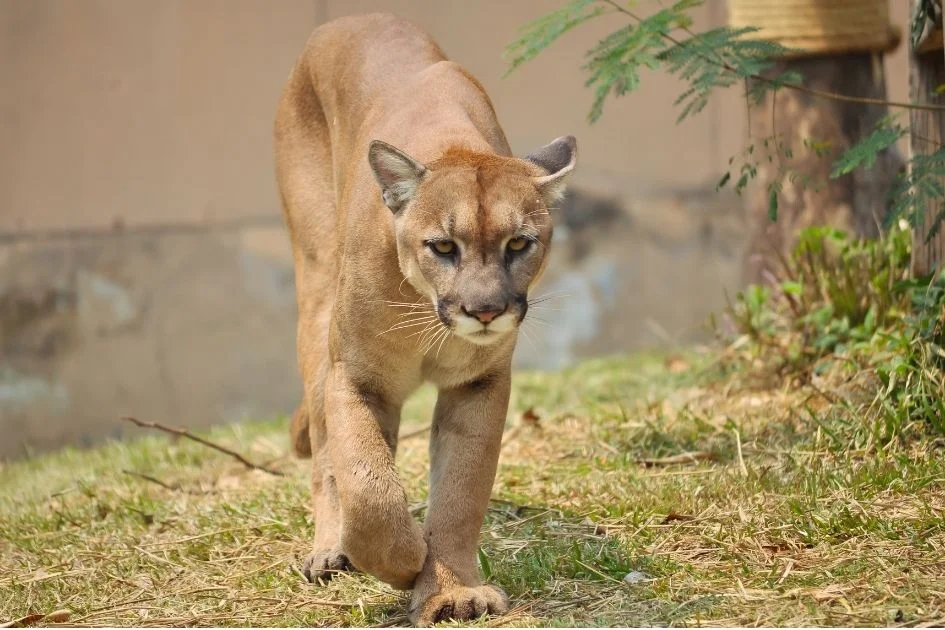
- Scientific name: Puma concolor
- Classification: Mammal
- Habitat: Rocky mountains, dense underbrush
- Diet: Carnivores
- Conservation status: Least concern
Also known as the puma, panther, catamount, and mountain lion, this predator can be found in many habitats on American continents. They prefer places such as swamps, mountains, and forests.
Studies conducted in 2008 in Patagonia National Park estimated the number of cougars in Patagonia to be 344 for every 100,000 hectares.
While cougars’ attacks on humans are rare, they still occur, especially to protect their cubs. In 2020, a man named Kunkyle was attacked by a cougar when he got too close to the cubs.
A cougar will most likely attack if it feels threatened or if its predatory instincts rouse it to pursue a fleeing human. Do not try to initiate a friendship with a cougar when you see one.
3. Kodkod

- Scientific name: Leopardus guigna
- Classification: Mammal
- Habitat: Coastal regions, forests, shrubs
- Diet: Carnivore
- Conservation status: Vulnerable
The Kodkod, also known as the guigna, is the smallest species of the cat family.
This animal is native to the Americas, but it has a declining population due to loss of habitat, lack of prey, and hunting by humans.
Though its small size and reclusive nature make it seem harmless to humans, it can still bite or lash out when it feels threatened or cornered.
Occasionally, they also attack domestic poultry resulting in economic loss to farmers.
4. Spectacled Bear
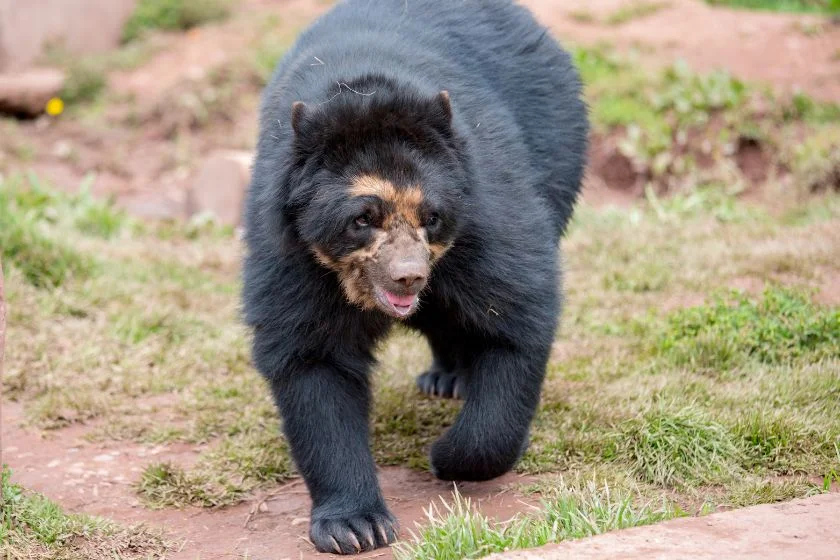
- Scientific name: Tremarctos ornatus
- Classification: Mammal
- Habitat: Mountains, dry forests, shrub deserts
- Diet: Herbivore
- Conservation status: Vulnerable
Commonly called the mountain bear or the Andean bear, the spectacled bear is the only south American surviving bear and the only remaining short-faced bear.
It is closely related to the giant-faced bear and the Florida spectacled bear, both of which are extinct.
This bear is usually docile but acts cautiously when it encounters humans. It could attack if it feels threatened.
Do not go close to its cub because, like other bears, this animal is overprotective of its cub and can fatally harm you.
5. Guanaco

- Scientific name: Lama guanicoe
- Classification: Mammal
- Habitat: Lower plateaus, plains, coastlines
- Diet: Herbivore
- Conservation status: Least Concern
The Guanaco is a camelid and close relative of the llama. This long-neck animal is one of the two wild camelids native to South America. The other camelid is the vicuna.
Being one of the largest terrestrial mammals native to South America, they have varying colors ranging from brown to cinnamon.
They are considered dangerous because they are fiercely overprotective of their young ones. Mothers are aggressive towards predators.
You do not want to be on the receiving end of the attack of an overprotective mother; therefore, avoid going too close.
6. Gray Fox
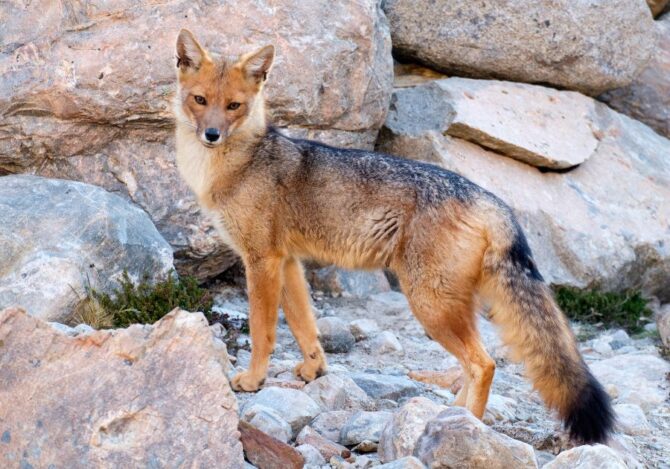
- Scientific name: Urocyon cinereoargenteus
- Classification: Mammal
- Habitat: Rocky areas, wooded and brushy regions
- Diet: Omnivores
- Conservation status: Least Concern
The gray fox, widespread on the South American continent, is one of the genus Urocyon’s two surviving members, with the diminutive island fox being the other surviving member.
It has a grizzled-looking upper part, a strong neck, and a pointed and angular muzzle.
What makes the gray fox dangerous is that, just like other foxes, this specie of fox can harbor rabies which can be transmitted to a human through its saliva from a bite.
Also, rabies-infected foxes are more likely to bite a human than other rabid animals. So it would be best if you kept your distance from this wild dog species to avoid trouble.
7. Culpa Fox

- Scientific name: Lycalopex culpaeus
- Classification: Mammal
- Habitat: Rainforests, deserts, plateaus
- Diet: Carnivores
- Conservation status: Least concern
The culpeo fox also called the Zorro culpeo or the Parama wolf is a species of fox native to South America.
It is not a true fox but a close relative of the jackal and wolf, but due to evolution, it has the appearance of a fox.
The culpeo fox, just like any other fox, can harbor rabies which could be transmitted to a human from a bite.
This fox also causes economic loss because they usually go after larger prey like sheep and goats, unlike the gray fox.
8. Southern Elephant Seal
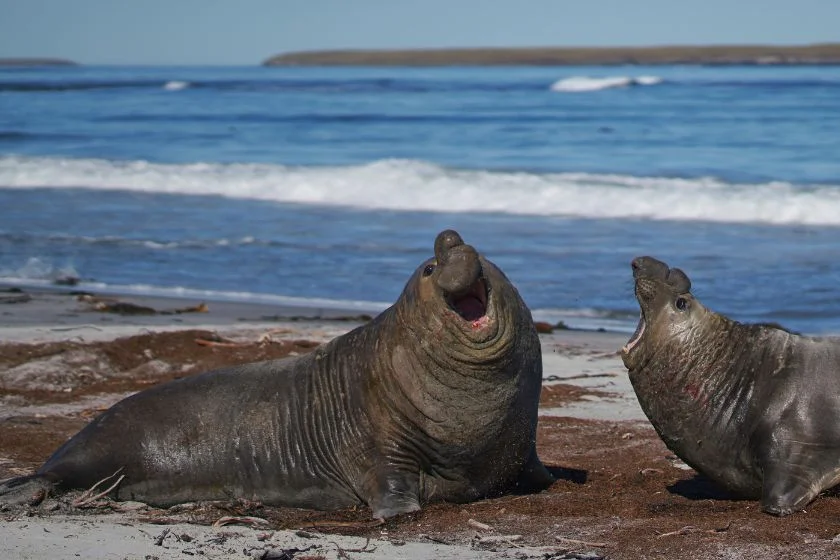
- Scientific name: Mirounga leonina
- Classification: Mammal
- Habitat: Cold water bodies, beaches
- Diet: Carnivore
- Conservation status: Least concern
This animal is the largest seal, and in addition to that, it is a specie of the elephant seal. It has a very massive body and weighs a lot too. They can travel great distances during migration.
In December 2010, The WCS tracked an elephant seal named Jackson to study the migratory routes of elephant seals; by November 2011, he was discovered to have swum 18,000 miles.
The southern elephant seal doesn’t have a charming personality. Its large teeth can break a human’s bones without intending to. There are many ways this animal can accidentally kill a human.
They have even been known to smash cars and trucks with their massive bodies without sustaining any serious bodily injury. Stay away from this animal if you ever come across one.
9. Lesser Rhea
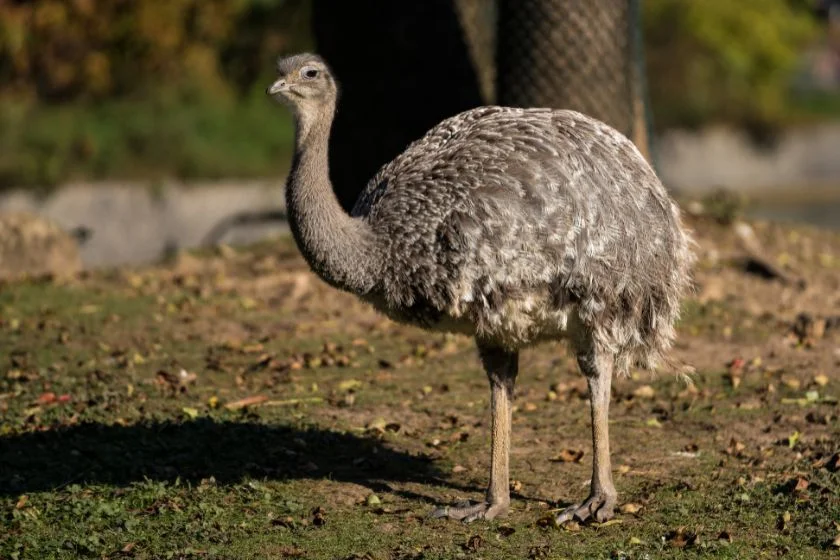
- Scientific name: Rhea pennata
- Classification: Bird
- Habitat: Grassland, brushlands, marshlands
- Diet: Herbivore
- Conservation: Least concern
The lesser rhea is called Darwin’s rhea, a large flightless bird, the smaller of the two surviving species of rheas.
This bird is commonly found in Patagonia. Though it looks like the ostrich, it is not related to it.
In as much as they aren’t considered dangerous, a lesser rhea can kill you with its six-inch-long claws with just a strike from its feet.
With its beak, it can also go for your eyes; you wouldn’t want to leave Patagonia with one eye after visiting with two. Steer clear of this bird when you see it.
10. Patagonian Lancehead

- Scientific name: Bothrops ammdytoides
- Classification: Reptile
- Habitat: Rocky areas, coastal dunes, riverbeds, forests
- Diet: Carnivore
- Conservation status: Least Concern
The Patagonian Lancehead is a specie of the venomous pit viper usually found in the northern part of Argentinean Patagonian.
It has a small body and is usually elusive. There is currently no recognized sub-specie of this snake.
It would be best to avoid this snake while exploring Patagonia because its venom is cytotoxic and hemotoxic. A bite can lead to internal bleeding and tissue destruction. It could also be fatal.
Fortunately, it will typically seek to escape than attack when it encounters a human.
11. Patagonian Green Racer
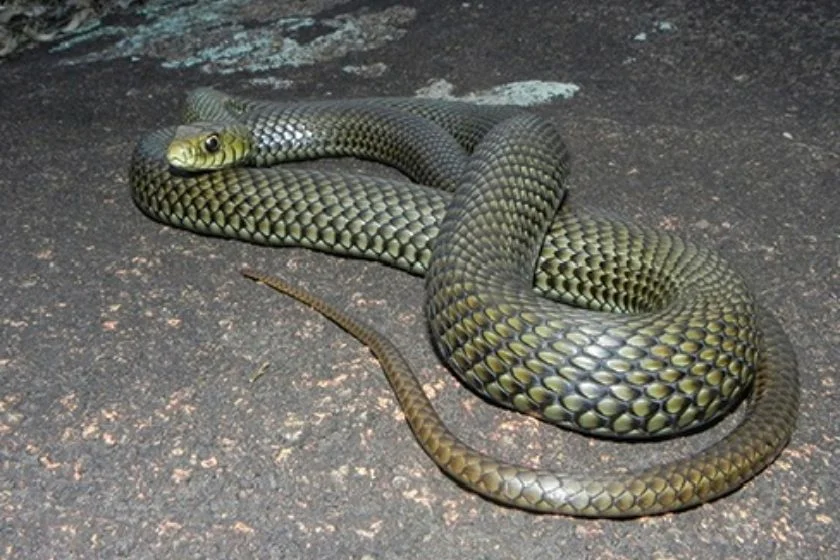
- Scientific name: Phylodryas patagoniensis
- Classification: Reptile
- Habitat: Forests, open areas
- Diet: Carnivore
- Conservation status: Least Concern
The Patagonian green racer is a venomous snake and a specie of the rear-fanged snake.
Despite its name, most of its range is in South American regions outside Patagonia. It has smooth scales and a round pupil on its medium-sized eye.
The venom of a Patagonian green racer is hemotoxic and myotoxic. A bite could lead to a block in the neuromuscular system and tissue death.
However, due to its dental structure, it has difficulty injecting venom. All the same, keep your distance from it.
12. Crossed Pit Viper
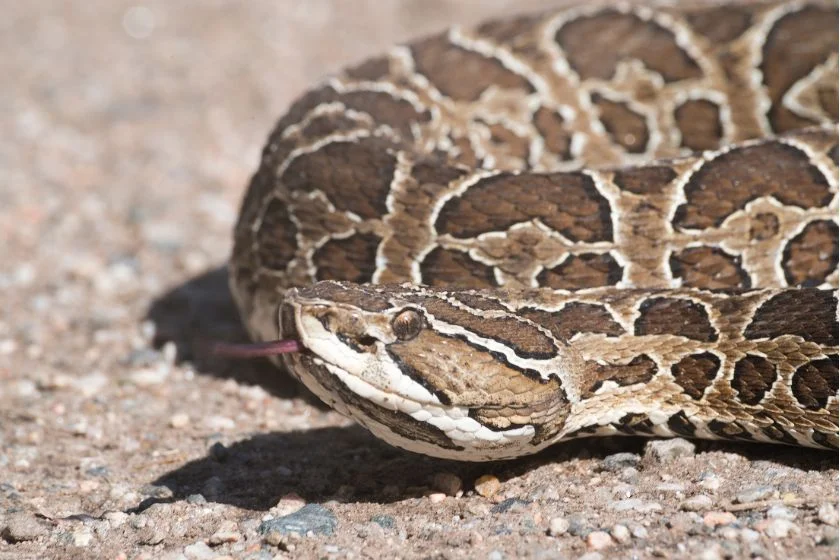
- Scientific name: Bothrops alternatus
- Classification: Reptile
- Habitat: Deciduous forests, sugarcane plantations, Rocky areas
- Diet: Carnivore
- Conservation status: Not extinct
The crossed pit viper is commonly found in South America. It is a venomous pit viper, and it bites frequently.
It is renowned for its alternating staggered markings, hence the name alternatus. There are no subspecies currently recognized.
Bites from this snake are rarely fatal, but it is frequent. Its venom can cause local tissue damage and prolonged blood clothing.
In a few cases, bleeding from the gum, necrosis, and local blistering can also occur.
Meddling with this snake in Patagonia is a recipe for disaster. Please stay away from it!
Patagonia Wildlife Safety Tips
Responsible exploring is key to protecting the wildlife in Patagonia and yourself. Ensure you observe the following rules to keep yourself safe.
They include:
- Keep to marked pathways: Do not divert from marked pathways when trekking to keep the pathway from widening and causing erosion. Also, it will protect you from thorns and crawlers.
- Keep a safe distance: Observing animals from a safe distance will keep you safe from harm. This will ensure the safety of vulnerable animals too.
- Do not feed the animals: Some of these animals, such as the snakes and pumas, might not understand your kind gesture and instead bite you. So as much as possible, avoid trying to feed any of these animals.
- Go with an insect repellent: Always carry your insect repellent with you to protect you from parasites such as leeches, ticks, and bugs.
- Avoid touching any of the animals: Please do not touch or carry the animals, especially the younglings, no matter how adorable they look. Their mothers might be lurking around, and you could be in trouble.
- Always carry out a thorough inspection: When you are tired, do not just sit down anywhere or on any random log or rock; always carry out a thorough inspection first.
Conclusion
Exploring the wildlife in Patagonia is nice and exciting, but you have to be considerate and respect the nature of these animals.
These most dangerous animals in Patagonia are lovely creatures left on their own, and their presence helps create a balance in nature.
Try as much as possible not to disturb them, and you will not have to worry about being attacked by any of these animals.
